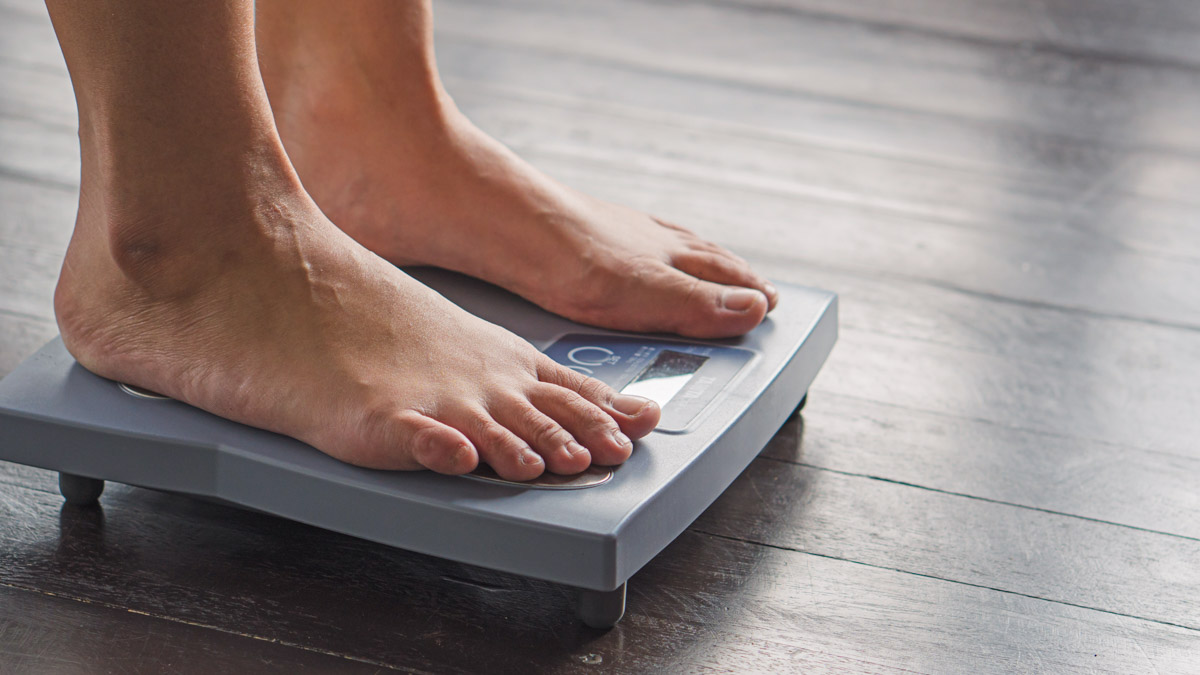Is there actually a right way to weigh yourself? Turns out there is. Whether you want to drop a few pounds or you’re just trying to get a read on your health, having consistent measurements is key. Here are some things to consider when weighing yourself, to help you track your weight fluctuations accurately over time.
Weigh Yourself in the Morning
Your body loses significant water weight overnight through breathing and perspiration, so stepping on the scale first thing in the morning will often give you your lightest weight of the day. This helps control for fluctuations due to hydration status or large meals, and will give you the best indication of any progress you’re making towards body composition goals. Seeing that number on the scale in the morning (rather than before bed) can also inspire you to make healthier choices throughout your day.
The one exception is if you’re using a body-composition measuring scale. These scales work by sending a harmless electrical current through your feet, and measuring the speed with which it passes through your body. The current moves faster through fat than muscle or bone, which will give you your rough body composition numbers. In this case, you’ll get your most accurate readings if you’re hydrated, fed and if your feet are a little damp (to help conduct the current). In this case, after breakfast and a shower might be your best bet for body composition readings.
Use the Bathroom Before Stepping on the Scale
You can experience significant fluctuations in weight due simply to your bladder or bowel contents. Depending on your body size, hydration, and recent meals, you may lose up to a pound after using the bathroom! If you don’t believe me, test this fluctuation by weighing yourself just after rising and then again after breakfast. You may be surprised how much change you see. Simply put, in order to get the most accurate read on your body composition goals (rather than your last meal), make sure you’re as empty as possible before stepping on the scale.
Consider External Variables
Here are some other factors that can affect the reading on your scale:
Temperature
Some digital scales become sluggish or less-responsive in very cold temperatures
Surface
A hard, flat surface is necessary for an accurate reading; setting your scale or carpeting or linoleum will give you inconsistent measurements.
Weight Distribution
Try to stand in the middle of the scale and hold as still as possible. Shifting your weight can change your reading on both digital and mechanical scales.
Clothing
Wearing clothing while weighing yourself can add up to two pounds—more if you’re wearing shoes. Again, this isn’t a big deal if you consistently weigh yourself wearing the same thing, but since our clothes vary with our moods and seasons, it’s best to go without when you step on the scale.
Don’t Underestimate Your Menstrual Cycle
If you’re a woman, you probably have a good idea of how much your cycle affects your weight each month. For some women, symptoms of PMS can include bloating or edema, which can cause weight gain as the body retains water. If you’re seeing unexplained weight gain, take a moment to find out where you are in your cycle before making any drastic changes. If you’re getting close to your period, chances are you’ll lose that water weight as quickly as you gained it.
Make this number work for you
Anyone with anxiety about their weight, or with history of an eating disorder, may not benefit from daily weight tracking. In these cases a weekly or monthly check-in might be more beneficial—if at all. As a triathlete friend likes to say; “I thought about losing weight once, but I don’t like losing.”
Remember, the number on your scale is just one indicator of your overall health and wellbeing, and as we’ve learned, there are many reasons why one day’s weight can vary significantly from another. The value comes in learning about your ups and downs, and understanding what affects your body composition over time. Once you have that baseline, you can start tracking your weight against your performance to find your personal training and racing sweet spot.









